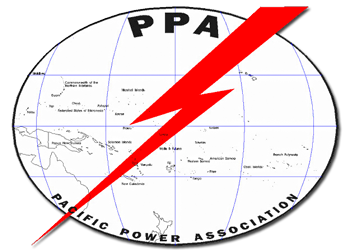LPG and natural gas as alternative energy sources for the Pacific
19.05.16 PRIF. A new PRIF research report that assesses the potential and economic feasibility of LPG, LNG or CNG to meet medium-term energy needs in the Pacific, was launched at the World LPG Association’s Oceania regional summit in Queensland, Australia yesterday. The study, conducted in association with Pacific Power Association and Secretariat of the Pacific Community, considers the end-use applications of electricity generation, process heating, maritime transport, land transport, cooking and water heating. The existing fuels considered for substitution include heavy fuel oil (HFO), diesel, gasoline, kerosene and traditional fuels such as firewood.
Liquefied Petroleum Gas, or LPG
All Pacific Island Countries already use LPG, mainly for household cooking and this study finds significant opportunities for expansion. If use of LPG was expanded to displace all cooking kerosene and biomass in the Pacific region, the current demand could double. LPG is a cleaner burning fuel than biomass and kerosene, therefore providing both health and environmental benefits. The Minister of Energy, Mines and Rural Electrification, Solomon Islands, Hon. David Day Pacha, in his address to the conference, explained “LPG has the advantage of being relatively simple to transport, whether it be by road tanker or in cylinders, which makes it accessible to remote communities to provide lighting, refrigeration, and heat to cook. The benefits to communities are significant as it enables activities to be performed at night including education, avoiding time spent collecting traditional fuels and removing the risks associated with open fires such as respiratory diseases”. Increased uptake would also improve economies of scale in supply chains, which in the case of the Pacific islands, involve great distances and raised shipping costs. In some cases, the capacity of existing port and storage infrastructure is sufficient but, in others, it would require some investment and expansion.
Liquefied Natural Gas, or LNG
LNG can now be shipped long distances in bulk ships in capacities as small as 10,000m3. However, a major drawback is that in the Pacific islands, considerable new capital investment would be required for more complex transport and unloading facilities in ports, special storage systems, in-country distribution networks, and equipment conversion. It would also require the development of new skills and regulations, as well as extensive marketing to ensure adequate demand. Under current market conditions, therefore, LNG in unlikely to present an economic option for the relatively modest demand that exists in the power generation sector in most Pacific countries. Indeed it could become a viable investment for only a few of the countries researched.
Compressed Natural Gas, or CNG
CNG cannot be shipped cost-effectively over large distances due to its relatively low energy density. It can, however, be produced if LNG shipments are put through a pressurised vapourisation process within the country – the so-called ‘Liquefied CNG’ (LCNG) process. However, this technology is very expensive, so it is likely to be less attractive to the PICTs.
Source: http://us8.campaign-archive1.com/?u=f4a36e56c4ad6ea4db0ce9382&id=d5a505a6a1&e=51fea3a5fa
